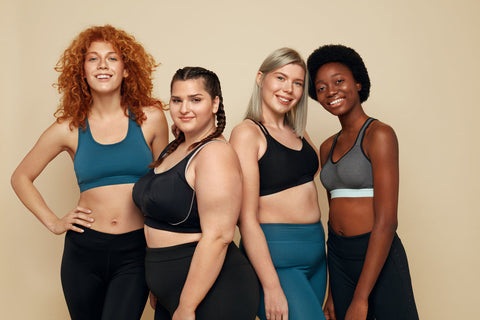The idea that people have different body types stems from the work of William Sheldon, a psychologist in the 1940s. He divided people into three main categories: ectomorphs, mesomorphs, and endomorphs. Although this model was originally intended to link personality traits to body type (something that proved scientifically untenable), the physical aspect of this classification is still widely used in sports, nutrition, and coaching. Not because it's absolute truth, but because it provides insight into how people respond differently to the same exertion.
Why you don't react the same way they do
If you've ever wondered, "Why do I keep gaining weight even though I eat the same as them?" or "Why don't I see results even though I work out hard?", it's likely that your body works fundamentally differently than someone else's. This has everything to do with your genetic makeup: your bone structure, your metabolism, your hormone sensitivity, and your predisposition to muscle or fat gain. This is where the concept of body types comes in.
The ectomorph body: slim, but difficult to build
Ectomorphs are naturally slimmer. They often have narrow shoulders, a flat chest, and little fat or muscle mass. Their metabolism is naturally faster, causing them to burn a lot of calories, even at rest. It's difficult for this type to gain weight, even in muscle mass. What's often overlooked is that, despite their slim appearance, ectomorphs can also be "skinny fat"—thin, but with little muscle definition and a higher body fat percentage than appears visible. This is especially true if they eat unhealthy and do little strength training. A training approach focused on muscle building, with relatively little cardio and just enough calories, primarily from protein and complex carbohydrates, works best for them.
The mesomorphic body: athlete by nature
Mesomorphs are genetically gifted when it comes to exercise and body modification. Their bodies respond quickly to training, they easily build muscle mass, and lose fat relatively easily. They often have an athletic build, with broad shoulders, a narrow waist, and naturally good muscle definition. While ectomorphs often have to fight for every pound of muscle mass, mesomorphs see results after just a few weeks. But that doesn't mean they can eat whatever they want. Because their bodies also respond quickly to food, they also easily store fat when overeating. The difference is: they can also lose that fat relatively quickly. For mesomorphs, a balanced training regimen of strength training alternating with some cardio often works best. The key for them is consistency and discipline, because their predisposition allows them to achieve results quickly, but also lose them just as quickly.
The endomorph body: prone to fat storage
Endomorphs face a different challenge. Their bodies are naturally rounder, with a greater tendency to store fat, especially around the stomach, hips, and thighs. Their metabolism is slower, meaning they burn fewer calories at rest and that food literally "sticks around" longer. They do build muscle mass easily, but that muscle is often less visible because of the layer of fat over it. Many women with an endomorph body type struggle with frustration: they try hard, but the scale doesn't seem to cooperate. It's important to understand that this doesn't mean losing weight is impossible; it simply means your body requires a different approach. Endomorphs respond better to foods with a low glycemic index, meaning foods that keep blood sugar levels stable. They have to watch their carbohydrate intake and often do well with a combination of strength training and short, intense cardio sessions (such as HIIT). Structure and rest in their day are crucial, as is hormonal balance.
No one is purely one type
What many people don't realize is that almost no one is a pure ectomorph, mesomorph, or endomorph. Most people are a mix. Think of someone who is slim on top but rounder around the hips and legs—an ecto-endo combination. Or someone who is muscular but still retains belly fat—a meso-endo. This also explains why so many standard diets and workout plans don't work: they don't take into account your unique build and sensitivity to fat storage, muscle growth, or blood sugar fluctuations.
Your body type as a strength, not a limitation
Your body type isn't an excuse, but a starting point. When you understand how your body works, you can set realistic goals. You stop comparing yourself to others who have a completely different genetic set point. And that gives you peace of mind. You understand why you might need to work a little harder, why you respond better to strength training than cardio, or why you need a higher carbohydrate intake to avoid burnout.
Learning to live and train according to your body type not only helps you physically—it also strengthens your self-image. Because suddenly it becomes clear that your body isn't "wrong," but simply has a different starting point.
Take the test: what body type are you?
Do you want to know what your body type is?
Take the free test on our website and immediately receive tailored advice for your body, your goals and your lifestyle.
👉 Take the test and discover your body type at the bottom of this page




